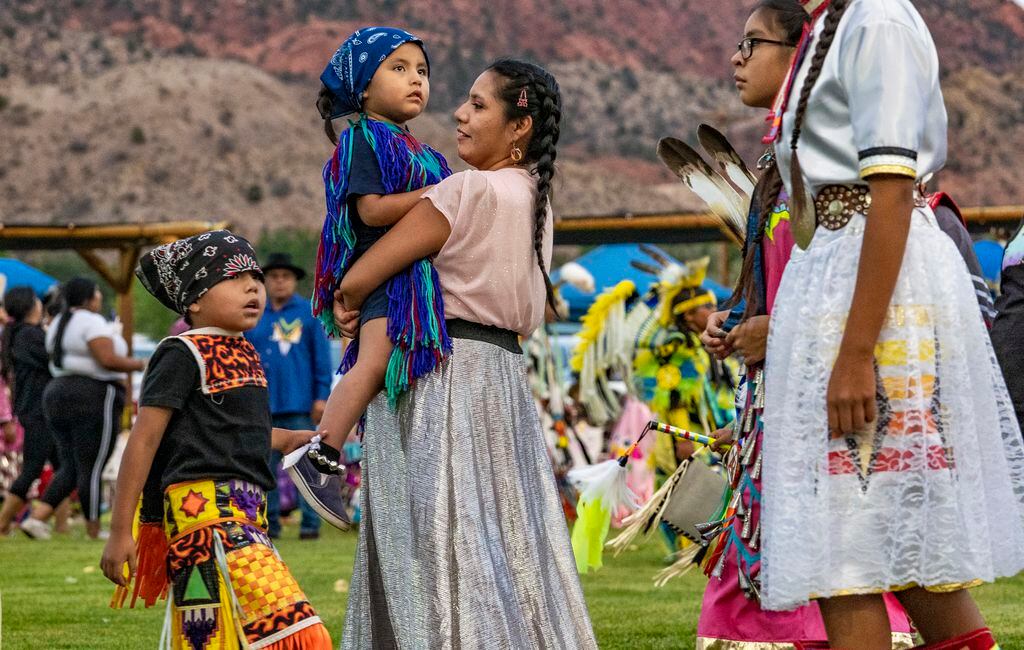Utah: Bill takes on ‘excessive removal of Native American children from their homes’
SB28 protects Native children in the state welfare system.

Men, women and children from Native American tribes throughout the West show their regalia during the Grand Entry at the 41st Annual Paiute Indian Tribe of Utah Restoration Gathering, Aug. 13, 2021 in Cedar City, Utah. (Leah Hogsten | The Salt Lake Tribune)
Utah continues to neglect Indigenous children and families, tribal community leaders and experts told members of the Senate Government Operations and Political Subdivisions on Monday, February 1, 2022.
Indigenous leaders hope the bill SB28 would fix some of the inequities which have plagued Indigenous residents of Utah for the last 126 years. The bill creates an Office of American Indian-Alaska Native Health and Family Services under the Utah Department of Health and Human Services to make sure that Indigenous children and families get protection when they enter the state’s child welfare system.
SB28 also moves the Indian Child Welfare Act Liaison and the American Indian-Alaskan Native Health Liaison from two different state agencies and brings both roles into the merging Utah Department of Health and Human Services. The merger is expected to take effect in July.
Supporters of the bill say the proposed merger streamlines how the government responds to Indigenous children and families when these children are taken by welfare agencies and also ensures that the Indian Child Welfare Act of 1978 is enforced. Also known as ICWA, the federal law governs the removal and placement of Native children to combat the high number of Indigenous children removed from their homes.
According to Utah Foster Care, there are about 100 American Indian/Alaska Native children in Utah’s foster care system at any time. There are fewer than 15 licensed American Indian/Alaska Native foster homes in the state for Indigenous children and families, says the nonprofit.
The bill “combats the excessive removal of Native American children from their homes and acknowledges the alarmingly high percentage of Indian families which are broken up by the removal of children,” Sen. Jani Iwamoto, D-Holliday, told The Tribune.
Paul Tsosie, legal counsel to the Confederated Tribes of the Goshute Reservation, said that SB28 also allows Utah to meet the burden of higher protections for Native families in the state, a burden he says is spelled out through the U.S. Constitution and the treaties between tribes and the federal government.
“The [Indian Child Welfare Act] specialist is crucial to help all parties correctly apply ICWA in the Utah State Court system,” Tsosie said.
The goal is to make sure that cultural sensitivity and Indigenous values are being taught to children who go to any home in the state, Tsosie added.
Rupert Steele, chairman of the Confederated Tribes of the Goshute Reservation, and Moroni Benally, a lobbyist for the Navajo Nation, and other tribes requested the Legislature pass the bill to protect the well-being, safety and health of the approximately 41,644 Indigenous children and families living in the state.
SOURCE






















No comments:
Post a Comment
Please: Share your reaction, your thoughts, and your opinions. Be passionate, be unapologetic. Offensive remarks will not be published. We are getting more and more spam. Comments will be monitored.
Use the comment form at the bottom of this website which is private and sent direct to Trace.